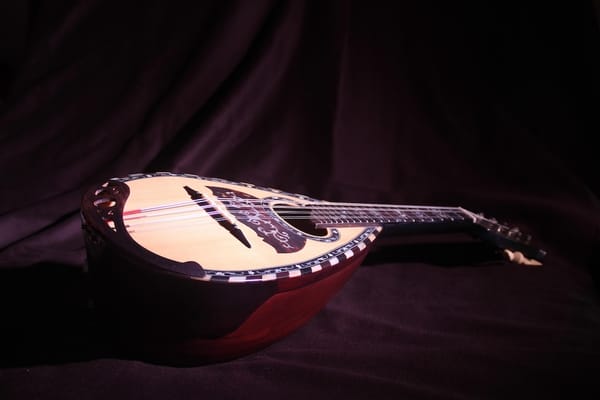How to Choose the Right Microphone for Your Recording Needs
From vocals to guitars, every sound source demands the right microphone. This guide explains dynamic, condenser, and ribbon mics—helping you choose the perfect tool for clarity, warmth, and precision in your recordings.

Choosing the right microphone can make or break a recording. Whether you are a singer, instrumentalist, podcaster, or sound engineer, the microphone is your first point of contact with sound. It translates the rich, complex vibrations of air into electrical signals, and the quality of that translation determines how faithfully your voice or instrument is captured. Yet with hundreds of models on the market, ranging from affordable USB mics to high-end studio condensers, the question remains: how do you choose the right one for your specific needs?
This guide explores the three main types of microphones—dynamic, condenser, and ribbon—and helps you understand when and why to use each.
How Microphones Work
Before diving into types, it helps to grasp the basic principle behind all microphones: transduction. A microphone converts sound waves into electrical energy. Inside, a delicate mechanism—typically a diaphragm—moves in response to air vibrations, generating an electrical signal that mirrors the sound.
Different microphones achieve this conversion in different ways. The design of the transducer largely determines a microphone’s sensitivity, frequency response, durability, and tone. This is where the distinction between dynamic, condenser, and ribbon microphones becomes crucial.
Dynamic Microphones
Dynamic microphones are the most rugged and versatile of the three types. They work using a moving coil attached to a diaphragm, placed within a magnetic field. When sound waves hit the diaphragm, the coil moves, generating an electrical signal.
Because this design is mechanical and robust, dynamic microphones can withstand high sound pressure levels (SPL), making them ideal for loud sources—think guitar amplifiers, drums, or live vocals on stage.
Advantages
- Durability: They can handle rough handling and extreme volume without distortion.
- No external power needed: Unlike condenser mics, they do not require phantom power.
- Excellent for live performance: Their directional pickup patterns help isolate the sound source and reduce background noise.
Limitations
- Lower sensitivity: They are less responsive to subtle nuances or high-frequency detail.
- Limited frequency response: Compared to condensers, they can sound slightly dull or less open on delicate sources.
Popular Models and Uses
- Shure SM58: A classic for live vocals; warm, reliable, and nearly indestructible.
- Shure SM57: Favoured for snare drums, guitar amps, and brass instruments.
- Sennheiser e906: Excellent for capturing electric guitar cabinets.
If you need a microphone for live gigs, rehearsal rooms, or recording loud instruments in a home studio, a dynamic mic should be your starting point.
Condenser Microphones
Condenser microphones—also called capacitor microphones—offer greater sensitivity and detail. They operate on a different principle: a thin, charged diaphragm sits close to a metal backplate, forming a capacitor. Sound waves cause the diaphragm to move, altering the distance between the two plates and changing the electrical signal.
Because this design requires power to maintain the charge, condensers need phantom power (usually +48V) supplied by an audio interface or mixing desk.
Advantages
- High sensitivity: Ideal for capturing subtle dynamics and high-frequency detail.
- Wide frequency response: Accurately reproduces both the brilliance and warmth of a performance.
- Excellent for studio work: Perfect for vocals, acoustic instruments, pianos, and orchestral recordings.
Limitations
- Fragility: More delicate and sensitive to moisture, humidity, and handling.
- Require phantom power: Not ideal for mobile or low-power setups.
- Can capture unwanted noise: Their sensitivity means they also pick up room reflections and ambient sounds.
Popular Models and Uses
- Neumann U87: A studio legend used for vocals, strings, and nearly everything else.
- AKG C414: Highly versatile, with multiple polar patterns.
- RØDE NT1-A: A popular entry-level choice offering professional clarity at a reasonable price.
If you are recording in a controlled environment—especially vocals, strings, or acoustic guitar—a condenser microphone is your best choice. Its clarity and precision can transform a good recording into a professional one.
Ribbon Microphones
Before condensers became dominant, ribbon microphones were the standard in studios throughout the mid-20th century. They use a thin strip of aluminium suspended in a magnetic field. When sound waves hit the ribbon, it moves, generating a voltage.
Ribbon mics are known for their smooth, natural tone and warm frequency response, particularly in the midrange. They capture the character of instruments and voices with a vintage charm that remains unmatched.
Advantages
- Natural and warm sound: They reproduce the human voice and acoustic instruments with a pleasing, organic tone.
- Smooth high frequencies: Ideal for taming harshness or overly bright sources.
- Figure-eight polar pattern: They capture sound from the front and back, lending depth to room recordings.
Limitations
- Fragility: The thin ribbon element is extremely delicate and can be damaged by high SPL or even strong air blasts.
- Low output: They require high-gain preamps or dedicated ribbon preamplifiers.
- No phantom power: Supplying phantom power can destroy older ribbon mics (modern ones often have built-in protection).
Popular Models and Uses
- Royer R-121: A modern classic, often used on electric guitars and brass.
- AEA R84: Praised for its vintage sound on vocals and strings.
- Coles 4038: Favoured in classical and orchestral settings for its natural soundstage.
Ribbon microphones excel in situations where you want warmth, smoothness, and depth. They can beautifully capture a cello’s resonance, a jazz singer’s tone, or the ambience of a room.
Choosing the Right Microphone
Selecting a microphone isn’t about finding the most expensive one—it’s about choosing the right tool for the job. Each microphone type has its own strengths depending on what you’re recording.
| Source | Recommended Microphone Type | Notes |
|---|---|---|
| Live vocals | Dynamic | Durable, resists feedback |
| Studio vocals | Condenser | Detailed, sensitive, captures expression |
| Electric guitar amp | Dynamic or Ribbon | Dynamic for punch, ribbon for warmth |
| Acoustic guitar | Condenser | Clarity and brightness |
| Drums | Dynamic (kick/snare), Condenser (overheads) | Combines punch and detail |
| Strings | Condenser or Ribbon | Condenser for clarity, ribbon for warmth |
| Brass instruments | Dynamic or Ribbon | Handles high SPL gracefully |
| Podcasts / Voiceover | Condenser (large diaphragm) | Smooth, studio-quality voice capture |
Other Factors to Consider
Once you’ve identified the right category of microphone, other technical and practical considerations come into play:
- Polar Pattern: Determines how the microphone picks up sound. Cardioid is most common (front-focused), while omnidirectional picks up sound from all directions, and figure-eight captures front and back equally.
- Impedance and Output Level: Important when matching with preamps or audio interfaces.
- Proximity Effect: Cardioid microphones often accentuate bass when close to the sound source—useful for warmth, but potentially muddy.
- Budget: Excellent recordings are possible at all price levels today. Prioritise clarity and suitability over prestige brands.
- Environment: Consider your recording space. A sensitive condenser mic in an untreated room might capture unwanted echoes, while a dynamic mic can focus on your voice alone.
Building a Microphone Collection
For those planning to record multiple instruments or voices, building a small microphone collection can provide flexibility. A practical setup might include:
- One dynamic mic (e.g., Shure SM57) for versatile use.
- One large-diaphragm condenser (e.g., RØDE NT1-A) for vocals and acoustic instruments.
- One ribbon mic (e.g., AEA R84) for warmth and character.
Together, these three can cover nearly any recording situation, from intimate vocal sessions to full band setups.
Conclusion
Microphones are like instruments themselves—each with its own voice, character, and purpose. A well-chosen microphone doesn’t just record sound; it enhances it, shaping the emotional and sonic impact of your work.
The key is understanding what you need: dynamic microphones for durability and live energy, condenser microphones for precision and clarity, and ribbon microphones for warmth and vintage smoothness. By matching the microphone to the sound source, environment, and desired tone, you can unlock a new level of fidelity in your recordings. In the end, the right microphone is the one that helps you hear your music the way you imagine it.





